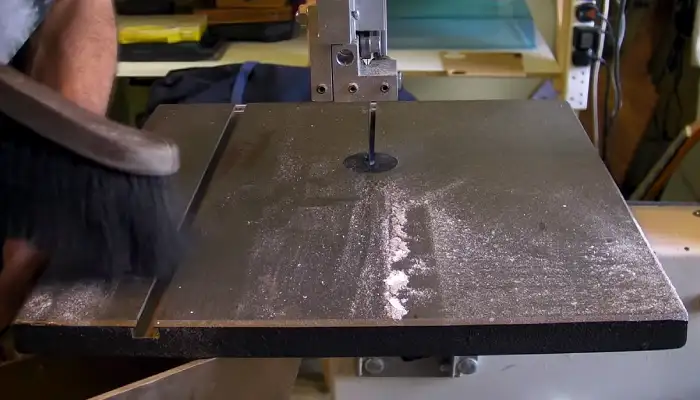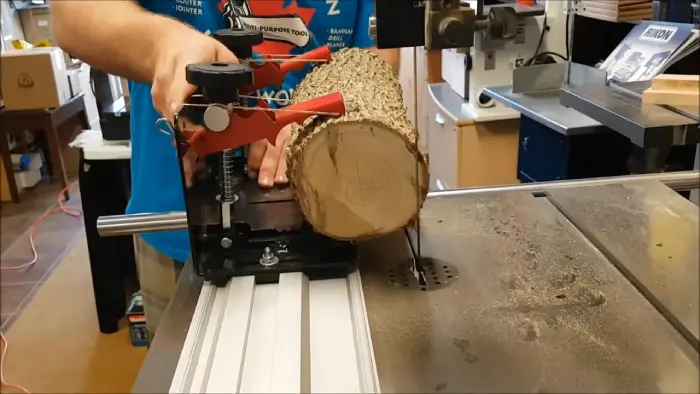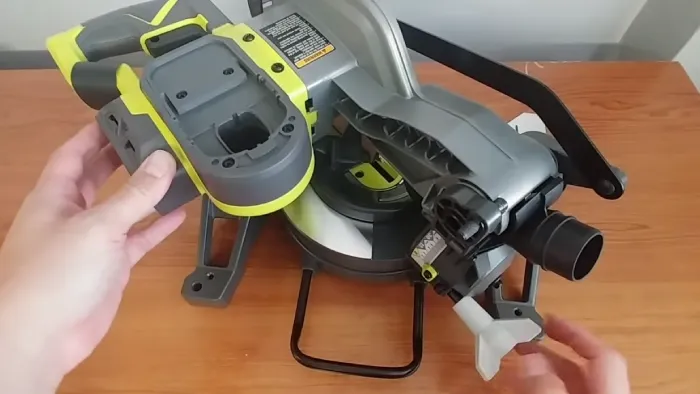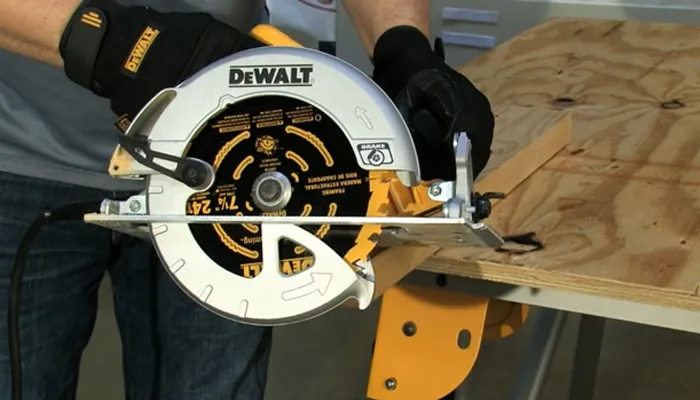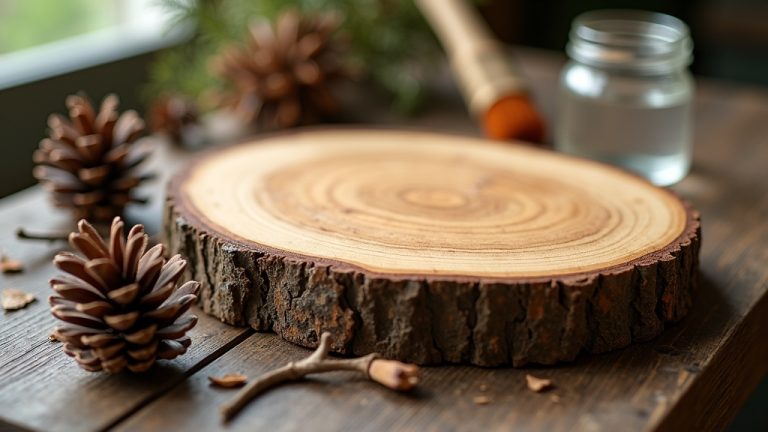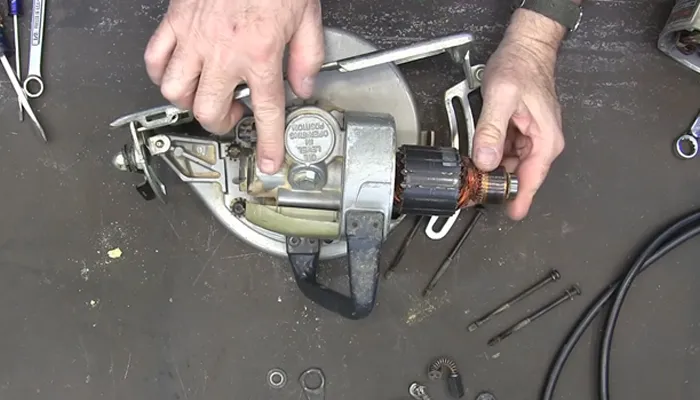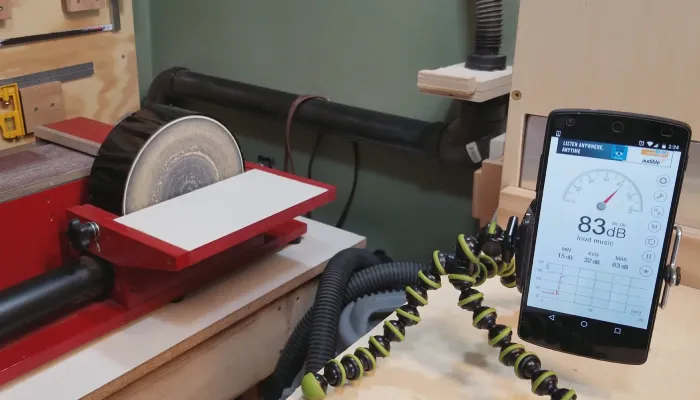How to Remove Rust From Band Saw Table: 4 Steps
You’ve spent countless hours crafting beautiful pieces of wood on your trusty band saw table, but now it’s marred by an unsightly layer of rust. Don’t fret because I found some simple and effective techniques to restore your table to its former glory.
Use a paint scraper to remove the initial rust. Utilize wire wool to get rid of any remaining rust marks. After that, you can smooth the surface by fine sanding. Make sure to degrease and clean the table before applying a rust inhibitor or distilled vinegar to prevent future rusting.
In this discussion, I will go through the step-by-step process for removing rust from your woodcutting bandsaw table. Whether you’re a seasoned woodworker or just starting, these tips will help protect your investment and ensure smooth, precise cuts.
How to Remove Rust From Wood Cutting Band Saw Table: Detailed Instructions
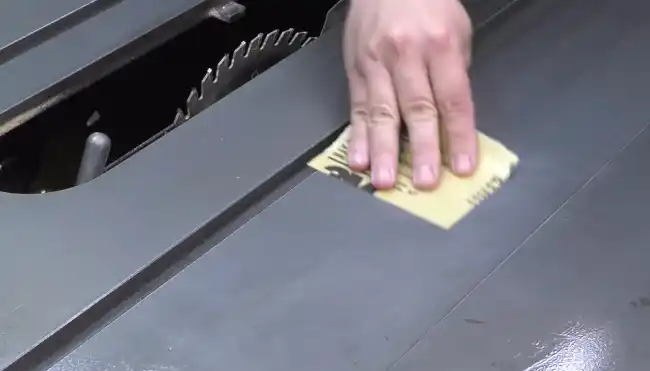
You can follow a few simple steps to remove rust from your wood-cutting band saw table. I listed the following steps based on my extensive findings and knowledge:
- Initial rust removal with a paint scraper
- Wire wool for remaining rust marks
- Fine sanding for smoothing
- Degrease and clean the surface
Step 01. Initial Rust Removal with a Paint Scraper
Start by gently using a paint scraper or razor blade to remove heavy rust from the band saw table, applying moderate pressure to lift off the surface rust effectively. Thoroughly scrape the rusted areas, ensuring comprehensive coverage of all affected spots.
This initial step is crucial in preparing the table for further rust removal. By scraping off the heavy rust, you’re effectively getting rid of the outer layer of corrosion, allowing for better access to the underlying rust. Be cautious and gentle during this process to avoid scratching or damaging the wood surface.
Step 02. Wire Wool for Remaining Rust Marks
To remove any remaining rust marks from your wood cutting band saw table, reach for double-0-double-o steel wool and gently rub it over the affected areas using consistent strokes. This fine steel wool is specifically designed to remove rust without scratching the surface of the wood.
As you work, make sure to lower the band saw table guard to prevent any accidents and cover the entire table to catch any debris that may be generated.
The gentle rubbing action of the steel wool will help break down the remaining rust and restore the smoothness of the table surface.
Step 03. Fine Sanding for Smoothing
After the wire wool process, you can achieve a smooth and polished finish on your wood-cutting band saw table using fine sanding pads. This step is crucial for eliminating any leftover marks and scratches and preparing the surface for further treatment.
When sanding, I recommend following the grain of the band saw table for optimal results. Take your time and go over the entire table surface, ensuring a smooth and consistent finish. The fine sanding pads will help to level out any uneven areas and provide a sleek appearance to your table.
Step 04. Degrease and Clean the Surface
Now thoroughly degrease and clean your band saw tires and table surface using a clean cloth dampened in mineral spirits or a similar cleaning solution. This step is crucial in removing any residue, grease, or contaminants from the table.
By wiping down the surface, you ensure it’s clean and free from anything that might interfere with the rust removal process. Pay attention to all areas of the table, including corners and edges.
How Do You Prevent Your Bandsaw Table From Future Rust Formation?
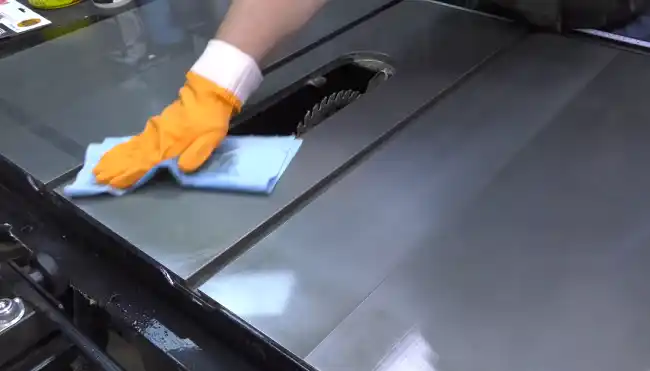
For added protection against rust, consider using a rust inhibitor or distilled vinegar on the wood-cutting band saw table. Applying a rust inhibitor or vinegar helps to create a protective barrier that inhibits the formation of rust on the table surface.
To do this, simply pour a small amount of the chosen solution onto a clean cloth or sponge and then gently wipe it onto the entire surface of the table.
For strong rust prevention barriers, I recommend further applying generous protective coatings, such as paste wax or another suitable option. This step ensures that the table remains rust-free and maintains its smooth surface for longer.
Cover the entire band saw table and its slots when applying the protective coating. Use a liberal amount and ensure even distribution to provide maximum coverage and protection.
After applying the coating, allow it to dry completely before moving on to the next step. This will ensure that the protective layer forms a barrier against moisture and prevents rust from forming on the table.
Can WD-40 remove rust from a band saw table?
WD-40, the versatile lubricant and anti-corrosive, can effectively remove rust from your band saw table without causing damage to the metal or paint. Originally used by the aerospace industry to prevent rusting on spacecraft, WD-40 is known for its ability to combat corrosion.
When removing rust from the band saw table metals such as iron, chrome, and stainless steel, I believe WD-40 is a reliable solution. Its unique formula allows it to penetrate the rust and loosen its grip on the metal surface.
By applying WD-40 to the rusted areas and allowing it to sit for a few minutes, you can then use a brush or cloth to scrub away the rust. The rust should come off easily, leaving you with a clean and rust-free band saw table.
How often should I remove rust from my band saw table?
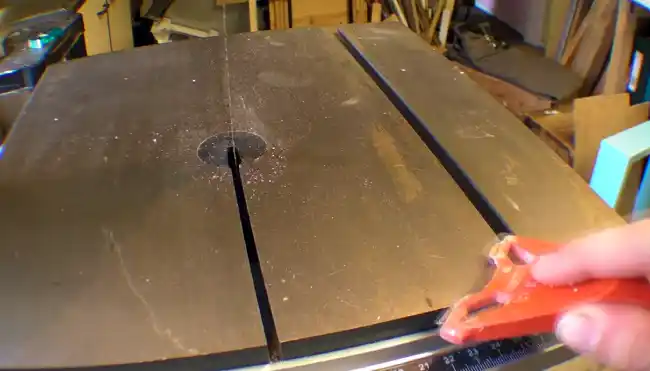
Regular maintenance and rust removal for your band saw table depends on usage and environmental conditions.
If you live in a high-humidity environment or if your band saw table is exposed to moisture frequently, it may be necessary to remove rust more often. Similarly, during periods of inactivity or storage, it’s important to check for rust and perform maintenance as needed.
To keep your table in optimal condition, it’s recommended to inspect it regularly for any signs of rust. This can be done by visually examining the table surface and checking for discoloration or rough patches. Additionally, running your hand along the table can help you feel for any roughness caused by rust.
How do I protect the band saw table from rust when cutting wet wood?
For optimal protection against rust when cutting wet wood, I strongly suggest ensuring the band saw table’s surface is well-coated with wax or rust inhibitors. When the table is properly coated, it creates a barrier between the wet wood and the metal surface, preventing moisture from seeping in and causing rust.
Wax is an effective option as it provides a smooth, water-resistant layer that helps repel moisture. Apply a thin layer of wax to the table’s surface, spreading it evenly and allowing it to dry before using the bandsaw.
Another option is to use a rust inhibitor specifically designed for metal surfaces. These inhibitors work by creating a protective coating that prevents rust formation. Apply the rust inhibitor according to the manufacturer’s instructions, ensuring complete table surface coverage.
After cutting wet wood safely, it’s important to wipe down the table to remove any remaining moisture. This will help prevent rust from forming over time.
Unlock the Art of Band Saw Table Care
I hope now you can keep your wood-cutting band saw table in good condition by practicing rust removal guidelines, as discussed above.
Tools like paint scrapers, steel wool, and fine sanding for a polished finish form the foundation of this restoration process. Furthermore, the application of protective coatings, careful lubrication, and the adoption of ongoing maintenance practices contribute to the long-term health of the band saw table.
You can ensure the enduring performance of your band saw by adhering to the insights shared in this guide. Keep in mind that a little effort now will go a long way in preserving the functionality and lifespan of your band saw table.

